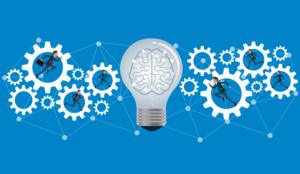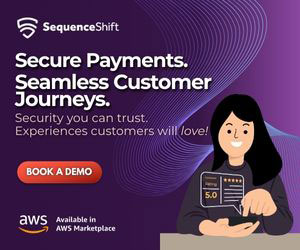Here our panel of experts note their favourite up-and-coming technologies that can really benefit contact centre operations.
1. Robotic Process Automation
How does Robotic Process Automation (RPA) work?
RPA mechanises each of the activities that are required to resolve a customer query – from the contact centre, back office and beyond – in the quickest time possible.
By automating manual processes – which are of a simple, transactional nature and require little (if any) subjective judgement – the contact centre can give advisors other tasks, of greater value.
What benefits does the technology bring to the contact centre?
The value of RPA is in making the workforce more efficient. The technology also eradicates human errors in many processes, helping to prevent costly mistakes and consequently sustain high levels of customer satisfaction and loyalty.
RPA also frees employees from the burden of monotonous, repetitive tasks, allowing them to focus on performing more enjoyable tasks. This increases employee engagement and leads to a better overall customer experience.
Other key benefits of RPA include; automating updates and alerts, maintaining consistent customer communication and providing employee desktop support aids.
For more about this technology, read our article: An Introduction to… Process Automation Technology
2. Passive Voice Biometrics
How does Passive Voice Biometrics work?
Passive voice biometrics verifies each caller’s claimed identity during the first few seconds of a call through natural conversation with an advisor, or even before the agent picks up the phone.
Also, the technology can trigger advisor guidance or fraud protection actions when needed, in a superior way to the initial voice biometric implementations, which mainly involved text-dependent speaker authentication.
What benefits does the technology bring to the contact centre?
Passive voice biometrics brings the same benefits as earlier biometrics systems, but it is even more accurate and helps to deliver a more seamless customer experience.

Dana Averbouch
These benefits include; speeding up traditional verification methods, being a proactive anti-fraud measure (allows the contact centre to create a voice signature for fraudsters) and enabling other secure services.
What is meant by “enabling secure services” is that voice biometrics can be used for self-service functions as well. These include password resets, digitally “voice signing” documents and gaining access into secure systems.
Thanks to Dana Averbouch at NICE
To find out more about biometrics, read our article: An Introduction to… Voice Biometrics
3. Internet of Things
How does the Internet of Things work?
The Internet of Things, in regard to the contact centre, involves connecting each contact centre system, computing device and product together, via the internet.
While the Internet of Things is something that many of us will have in our houses, to connect our phones with our televisions and so forth, it can be used to the same effect in the contact centre.
What benefits does the technology bring to the contact centre?
As the Internet of Things continues to develop, forward-thinking contact centres are already seeing a number of benefits. One of which is by automatically detecting problems.
So, if a washing machine starts to fail, with the Internet of Things the device can transmit a message to the organisation that it needs fixing – removing the customer from the process altogether.
With this interconnectivity, call volumes will likely fall, there will be an increase in the number of data sources that are available for analysis and the contact centre can increase its proactive engagement with customers.
While the technology is in its early stages of development, many companies – such as DHL, Hitachi and Rolls Royce – are all using in the Internet of Things across their organisations, in the hopes of generating ROI.
4. Smart Desktops
How does Smart Desktops work?
In many contact centres, advisors will have to use multiple systems to gain access to all the necessary customer data. However, a smart desktop would:
- Hide architectural complexities
- Use a single sign-on – i.e. advisors don’t need to log into numerous different systems
- Use an intuitive User Interface (UI)
- Offer smart guides – which can analyse conversations and give advisors feedback
What benefits does the technology bring to the contact centre?
The main benefit that smart desktops bring is that they reduce advisor effort by mechanising, guiding, and presenting useful information about the customer and the query type. This helps to boost productivity, while improving the flow of contact centre conversations.
As well as this, smart desktops can guide best practice, so when faced with a challenging call type, advisors can check user guides to seek additional support.
Furthermore, smart desktops encourage collaboration by connecting advisors with other departments. For example, the advisor can just use their desktop to connect with someone in finance to help solve a customer issue.
Even the simplest smart desktop – which integrates all the disconnected CRM, back-office systems and multichannel communication into a single UI – can help to generate an ROI.
Thanks to Richard Snow at Ventana Research
For more on smart desktops, read the article: An Introduction to Agent Desktops – With a Definition, Best Features and Mistakes to Avoid
5. Softphones
How do Softphones work?
A softphone enables anyone to make phone calls from their general-purpose computer without having to invest in specialised communications hardware.
The latest softphone models provide plug-and-play functionality and can be found within communications platforms such as Skype for Business, Jabber and Aura.
What benefits does the technology bring to the contact centre?
Softphones are becoming ever-more popular as contact centres move away from traditional PBX hardware.
They allow advisors to take calls from any device, anywhere, and efficiently manage their calls via their desktop, without the need for additional hardware, such as handsets – helping to reduce capex.
The softphone also provides features such as call management, personalised settings, call status dashboards, and much more besides.
Aside from the savings on company-wide call hardware, softphones enable workers to be more productive as they can more readily manage calls and liaise with supervisors and colleagues – as well as improving the experience for advisors.
6. Wireless Headsets
How do Wireless Headsets work?
Wireless headsets are a technology that enables workers to move around their workplace more freely.
The latest technologies provide a range of up to 150 metres without affecting call quality and, as office space is continually being squeezed, they are also focused on improving density without affecting the call experience.
What benefits does the technology bring to the contact centre?
The customer journey is changing in contact centre where automation replaces routine, transactional calls. As a result, human interaction is reserved for business-critical calls, such as complex enquiries and complaints.
In accordance with this, it is beneficial for contact centre advisors to be more mobile, so they can move around the office, to consult with other team members or to look through documentation.

Nigel Dunn
Providing greater mobility improves employee productivity by enabling users to move anywhere to source the information or advice they need to resolve the customer’s enquiry.
By using wireless headsets, the contact centre will more than likely see improvements in individual or collective productivity, percentage of calls successfully resolved, the speed of resolution and the number of agents in a single space without having an impact on call quality. Each of these factors will potentially result in a significant ROI.
Thanks to Nigel Dunn at Jabra
7. Predictive Analytics
How does Predictive Analytics work?
This technology uses Artificial Intelligence (AI) and Machine Learning (ML) to find patterns in the huge volumes of data that is associated with customer interactions and uses these ‘patterns’ for predictive scoring and discovery of key business insights.
Interaction analytics tools, which already have the capacity to automate call categorisation and scoring, use AI and ML to accelerate the process of identifying patterns in the large volumes of data.
What benefits does the technology bring to the contact centre?
Being an interaction analytics tool, predictive analytics has a number of uses that can benefit the contact centre. Some of these include:

Frank Sherlock
- Predicting outcomes to interactions, such as the potential for sales to close, or the likelihood of customer churn
- Surfacing new trends or points of interest – such as the causes of increase in key metrics (call handle times, call volumes, dissatisfaction, repeat contacts), or agent performance challenges
- Providing this early insight that enables the contact centre manager to brief agents so that they handle emerging customer needs and expectations more effectively
Thanks to Frank Sherlock at CallMiner
8. Mobile Screening
How does Mobile Screening work?
Mobile screening is a technology that identifies the network status of mobiles before attempting to contact them, as a means of avoiding invalid, switched off, or roaming numbers.
By interrogating the mobile network, screening technology is able to determine whether or not the intended device is contactable.
If the device is unavailable, rather than send the call regardless, the screening software stops a call being automatically made, moving straight to the next number for interrogation.
What benefits does the technology bring to the contact centre?
With one in three mobile phones either switched off or roaming overseas, and bad or disconnected numbers typically accounting for 10-15% of most calling lists, there are economic and strategic incentives to introducing mobile screening.
Also, contact centres are able to save on connection costs by avoiding unreachable numbers and identifying bad or disconnected leads.
Filtering out these individuals increases internal efficiency, eliminating time wasted trying to connect calls, and potentially boosting connected calls by up to 40%.
According to West Unified Communications’ research, mobile screening can cut connection costs by 50% and increase talk-time by 37%. This means that contact centre can expect a considerable ROI and improved productivity.
9. Chatbots
How do Chatbots work?
A chatbot is a piece software that can be used in calling or messaging applications that automates processes for a customer in a manner that simulates human interaction, conducting a conversation via audio or text methods.
Chatbots are typically used in dialog systems, with the simplest systems scanning for keywords within what’s been input by the customer and then matching that with words and phrases it recognises, to which it will then respond appropriately.
What benefits does the technology bring to the contact centre?
Chatbots are now sophisticated enough to be able to provide a ‘human’ approach to automated communications, taking on some of the day-to-day, mundane tasks and simpler requests. This allows for a personalised service without draining the usually corresponding human resources. Some are even charismatic, if they are aligned with an effective brand voice.
Also, chatbots have infinitely more stamina for long hours than their human counterparts, allowing for 24/7 contact at consistent service standards.

Enda Kenneally
Moreover, chatbot interactions collect large amounts of data that can be used to improve and review exchanges with the customer, monitoring an individual’s purchasing patterns and behaviours.
Finally, chatbots can identify the route that customers have taken across a site to reach them, spotting where organic traffic generates well, and where traffic is or isn’t converting into sales and proactively engage with customers as a motivator or a guide.
Thanks to Enda Kenneally at West Unified Communications
Will chatbots help you to meet your key business objectives? Find out in our article: Call Centre Software: What Should You Be Looking Out For?
10. Cloud-Based Solutions
How do Cloud-Based Solutions work?
Cloud-based contact centre solutions are a growing trend within the industry, with more organisations investing in cloud contact centres.
Cloud contact centres are an evolution of the on-site call centre system to a cloud-based system, which is usually adaptable, and can be scaled according to the size of the organisation.
What benefits does the technology bring to the contact centre?
Cloud contact centres, like NICE CXone, offer a unified suite by combining omnichannel routing with technologies such as workforce optimisation, analytics, automation and Artificial Intelligence (AI), allowing organisations to:

Daniel May
- Increase and reduce size with full elasticity to address immediate operational needs in a pay-as-you-go model
- Focus their energy on customer experience innovation rather than on infrastructure integrations
- Connect customer journeys in a highly personalised way across all channels
- Turn smart, state-of-the-art analytics insight into results in real time
- Unlock employee potential, and engage, motivate, and optimise the workforce
With thanks to Daniel May at Business Systems
For more on contact centre technologies that are starting to make a mark on the industry, try reading some of the following articles:
- 26 Contact Centre Technology Predictions for 2018
- Which Technologies Give the Best Return on Investment (ROI)?
- Top 10 Contact Centre Software and Technology 2017
Author: Robyn Coppell
Published On: 30th May 2018 - Last modified: 12th Sep 2025
Read more about - Technology, Agent Desktop, Automation, Biometrics, Business Systems, CallMiner, Daniel May, Headsets, Intrado, Jabra, NiCE, Richard Snow






































